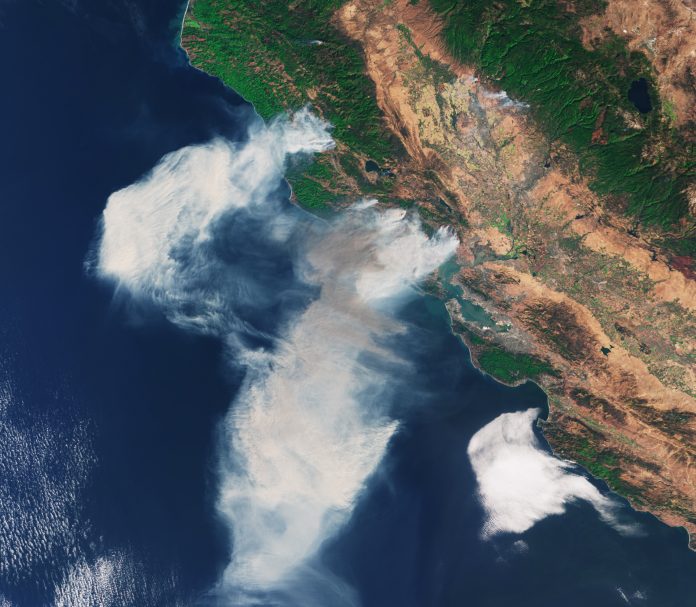
Sofia Quinones
Fire crews have almost fully contained wildfires that have devastated the Northern California wine country since Oct. 8.
Lasting damage, however, extends to University of California, Santa Barbara students whose families felt the effects of the deadliest wildfires in California history.
In total, the fires burned over 245,000 acres, destroyed over 8,400 structures, displaced over 100,000 people, and killed at least 42 people since they began. Destruction tore through Santa Rosa, Napa, and Sonoma Valleys, along with other areas north of San Francisco.
As the fires spread, UCSB students tracked the events, through the news and in person. Pia Von Strasser, a second year and Napa Valley native, witnessed the fire’s effects when she visited home as the fires fully burned.
Von Strasser said she could smell the smoke from San Jose, which is two hours from the burning areas. She saw the damage while she drove around Silverado’s outskirts.
“Things are just burned to the ground,” Von Strasser said. “Cars were completely melted.” Some of the properties were saved because they’re surrounded by vineyards, she said. Healthy, low-fuel plants like vineyard vines are less flammable.
“The fire would burn up to the vineyard and all around it,” Von Strasser said. “The smoke was so intense, I literally had to wear one of those respirator masks, because otherwise I felt really sick.”
Von Strasser, a psychological and brain sciences major, said her family was okay but suffered from the smoke, along with the other residents. Her family owns a winery in Calistoga, a small city in Napa Valley. The sheer destruction of the vineyards will put a strain on the area’s economy, especially during harvest season, she said.
Her father picked the majority of his grapes beforehand, she said, but the unpicked ones are now permanently damaged by the fire effects and will take at least a year to replant.
First year Ana Gonzalez’s family lives in the Browns Valley, which was damaged by the Cascade Fire northeast of Marysville. Her parents had to evacuate their home.
“They just started packing stuff up with food,” Gonzalez said. Her parents began preparing to leave as the fires got started. Gonzalez’s mother is an obstetrician gynecologist at a Napa County hospital. In times of wildfires, hospitals are packed.
“She’s concerned with women going into labor, because there’s no stopping that — fire or no fire,” said Gonzalez, a writing and literature major in the College of Creative Studies. She said her mother worried about smoke invading hospital delivery rooms, where newborn babies aren’t prepared for heavy fire smoke contacting their brand-new lungs.
The fight against the fires is almost over, but a grand cleaning process is in store. Clearing the vast smoke damage and hazardous substances that have fallen onto more than 8,400 structures will be the largest fire cleanup effort in the history of California, the San Jose Mercury News reported.
Gonzalez found that the whole experience distracted her from her studies at UCSB as fires razed homes to the ground up north.
“You don’t know true fear until something is happening to someone you love, beyond your reach,” Gonzalez said.
Shomik Mukherjee contributed reporting. Some quotes were lightly edited for clarity.
UPDATE
Oct. 25, 12:39 p.m.: A previous version of the story said San Jose is two miles from the burning area. The city is two hours away.
















